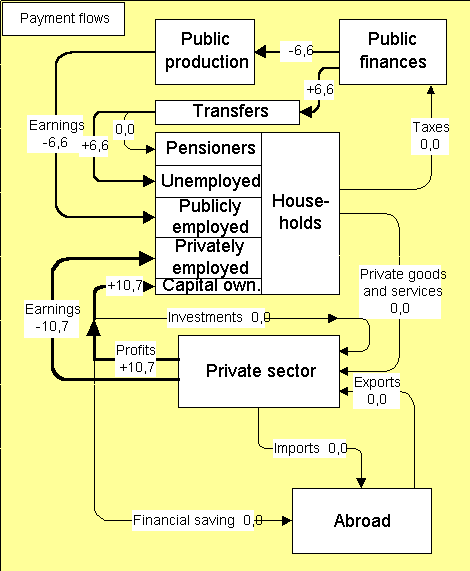
8. Simulation results with static model S3 |
1999-07-06 To Chap 7 |
| Profits of enterprises, taxes, economic growth. |
The economic circular flows (Model S3) that was described in chapter 7 is the most simple model that does not give merely obvious results. This chapter describes the influence of every parameter of the model. Further, some cases that are frequently discussed in Swedish politics today, namely the profits of the companies, the taxes and economic growth, are investigated.
When studying the economy of the real life based on historical experience, it is never possible to see the influence of a single variable. A lot of changes occur simultaneously. It may be difficult and even misleading to describe the relation between two variables, because the result depends upon many different factors.
A mathematical model permits that one factor is varied at a time without any other disturbances. Caution is also needed when interpreting the simulation results. It has to be remembered which other parameters are held constant when one parameter is varied. Note that, in model S3, the total private consumption is constant when salaries, wages and other compensation levels are changed. Each sector maintains its balance of payments.
The table below summarizes the influences of the parameters and four state variables (four flows) of Model S3. (Legend: Mdr = billion of Swedish crowns (SEK); kKr = 1000 SEK.)
| Quantity that
is varied, Magnitude of change Value of parameter, before -> after |
Unemployment increase (+) decrease (-) |
GDP change |
Gross profits change | Notes |
| Parameters varied | Thousands | Mdr/year | Mdr/year | |
| Increased
salaries and wages to publicly employed, +5 kKr/year 238,3 ->243,3 kKr/year |
+68 | -7,1 | 0 | Note. 1 |
| Increased
pensions, + 5 kKr/year 184,1->189,1 kKr/year |
+57 | -13,7 | 0 | |
| Increased
unemployment compensation, + 5 kKr/year 104,1->109,1 kKr/year |
+54 | -12,9 | 0 | |
| Increased
taxes, + 1 %-unit ratio 0,516->0,526 |
-269 | +64,1 | 0 | Treated in detail below |
| Increased
salaries and wages to privately employed, +5 kKr/year 298,1->303,1 kKr/year |
+59 | -6,1 | 0 | Note. 2 |
| Increased
profit share, +1 %-unit 0,438->0,448 |
+64 | -6,6 | +10,7 | Treated in detail below |
| State variables varied | ||||
| Increased
imports, +5 Mdr / year 496,5->501,5 Mdr / year |
+17 | -6,7 | -2,2 | |
| Increased
private consumption, +5 Mdr / year 828->833 Mdr / year |
-57 | +16,4 | +2,3 | Treated in detail below |
| Increased
investments, +5 Mdr / year 178->183 Mdr / year |
-14 | 5,6 | +1,8 | |
| Increased
exports, +5 Mdr / year 558->563 Mdr / year |
-2 | +0,8 | +0,3 |
Table 8.1:1 Influence from single parameters upon the economy, Model S3.
Note. 1: The public sector employs as many people as it can afford, when compensation to not working (unemployed) and pensions are paid.
Note. 2: Increased wages and salaries gives higher unemployment rate, provided that the profit share is kept constant. If the increase in wages and salaries is done at the expense of the profits, then the unemployment decreases. The latter is an example of how two factors have a combined influence, namely increased salaries and wages and decreased profit shares. The model says nothing about the mutual relation between these two factors. The balance is in real life established as a result of human decisions made during negotiations between employees and employers in addition to the decisions of the companies about the sales prices. (Increased prices help to maintain the profit share.)
The table shows that the factors that decrease the unemployment are:
These changes also give an increased Gross Domestic Product (GDP). Increased taxes do not only refer to increased nominal tax rates, but presupposes that the tax payments also increase (no tax fraud). The model further more presupposes that the tax incomes are used to employ people in the public sector as far as they are not need for transfers. The public budget is assumed to be in equilibrium. Later models will show the influence of public borrowing.
The factors that give increased profits in the private sector are:
The increased profit shares are assumed to be accomplished by increased productivity and laying off employees while the yearly earnings of the privately employed are constant.
The mechanisms behind three of the factors are discussed more
in detail below.

Figure 8.2:1. Changes of payment flows when the profit share of the companies increases by 1 % of the value added.
The companies increase their profits by increasing the productivity. The employees that remain employed have the same yearly earnings. The production of goods and services does not change. One part of the total purchasing power is redistributed from the privately employed that lose their jobs to the capital owners, but the total purchasing power of the households is maintained.
The redistribution can be seen as a small circular flow superimposed on the previous flows. The decrease of the earnings of the privately employed by 10,7 Mdr/year can be regarded as earnings that flow in the opposite direction of the normal (= positive direction).
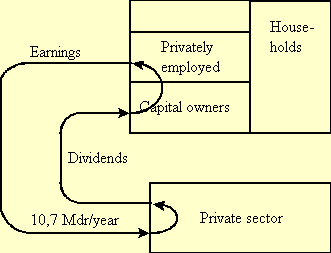
Figure 8.2:2. The change as a small circular flow in the big flow. The reversed direction of the flow means that the total earnings decrease.
As an alternative, we may regard the change as one part of the flow taking different paths:
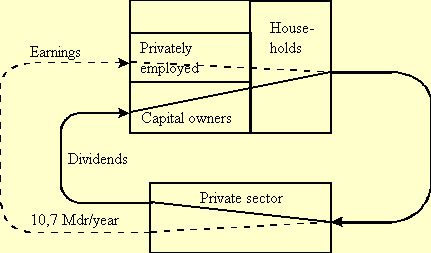
Figure 8.2:3. One circular flow that follows
different paths.
It is a general rule for closed systems, that it is always possible to describe the payment flows as closed loops that are superimposed on one another. This guarantees that the balance condition for the payment flows is fulfilled for all the sectors through which the flow passes.
Some privately employed lose their jobs and become unemployed. This increases the transfers (compensations to unemployed) and less money is left to the employees in the public sector. Imagine another small circular flow, transfers + 6,6 Mdr/year, compensation to unemployed + 6,6 Mdr/year, wages and salaries to publicly employed - 6,6 Mdr/year and expenditures for the public production - 6,6 Mdr/year. Some of the publicly employed also become unemployed (upper part of figure 8.2:1).

Figure 8.2:4. Changes of workforce flows when the profit share of the companies increases by 1 % of the value added.
Workforce flows ( in a generalized meaning) are examples of source flows. Source flows originate at a source (the households) and terminates in one or more sinks (the companies, the public production, the transfer system). Because there is a single source to draw from, an increment of one flow gives a corresponding decrement of an other flow.
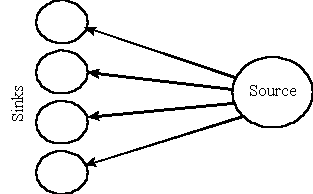
Figure 8.2:5. Source flows.
The changes of the flows of workforce are proportional to the changes of the corresponding payment flows. The yearly earnings and the yearly compensations are the proportionality factors.
As shown above, a higher profit share means that more dividends are paid to the capital owners (investments, exports and imports are assumed constant). Below is shown how the number of not employed (unemployed) changes when the dividends increase:
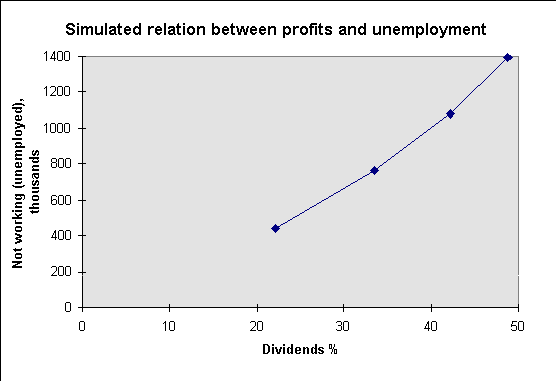
Figure 8.2:6. Theoretical relation between the number
of not employed as the dividends increase, Model S3.
This can be compared with the corresponding diagram of the registered unemployment according to data from SCB (1):
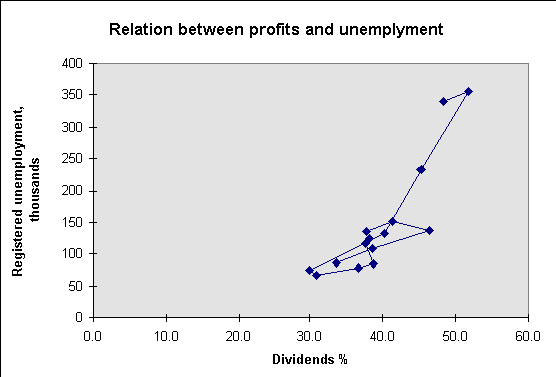
Figure 8.2:7. The registered unemployment in Sweden
as a function of the profit share. Ref: Data from SCB.
The two diagrams resemble one another to a high degree. The statistical covariance is surprisingly big, considering that a number of other factors also influence the unemployment rate. When comparing the two diagrams it has to be kept in mind that labor market policy measures such as education programs etc. influences the registered unemployment rate. The relation between profits and unemployment can also be shown as a function of time:
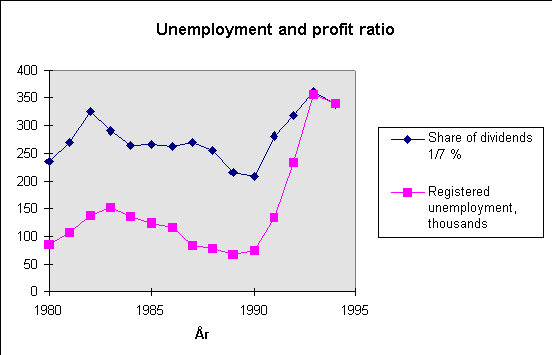
Figure 8.2:8. Share of dividends and number of registered unemployed in Sweden during the years 1980 - 1994. (The unit for dividends is 1/7 of a percent in order to give the curves the same vertical size).
This diagram also shows a covariance between the share of dividends and the unemployment. The curves are practically parallel until the year 1990, then the curves run closer to one another. After 1990, the unemployment has increased relatively more. The cause has to be further investigated, one cause may be the markedly lower rate of investments after the year 1990 (see diagram 7.2:5).
The increase of the unemployment and the profits of the companies has mainly occurred after the year 1990. Lennart Nyström, economist at SIF (the Swedish Union of Clerical and Technical Employees in Industry) describes in a report (2) how a transition from "Industrial owners" to "Activist owners" has occurred. "Activist owners strive to get maximum value from the companies for their own benefits and leave a minimum of resources in the companies. The activist owners have come through the international capital but leaven nowadays many Swedish institutions. Activist owners and the owned companies compete for who is going to acquire the economic resources of the companies and can therefore easily be in conflict with the long run development of the companies."
The description of Lars Nyströms agrees very well with the development of the use of the gross profits, as shown in the previous diagram 7.2:5.
It is often argued that the profits of the Swedish companies
have to grow, otherwise the companies move abroad, and that also
results in increased unemployment. This argument does not
contradict the interdependence between unemployment and profits
that was shown above. Irrespectively of how the pressure on the
companies comes, the result is the same. The companies increase
their productivity in order to "look after their
profits" as the reasoning goes when economists discuss on
the Swedish radio, "The Economic Club" program 1 (P1).
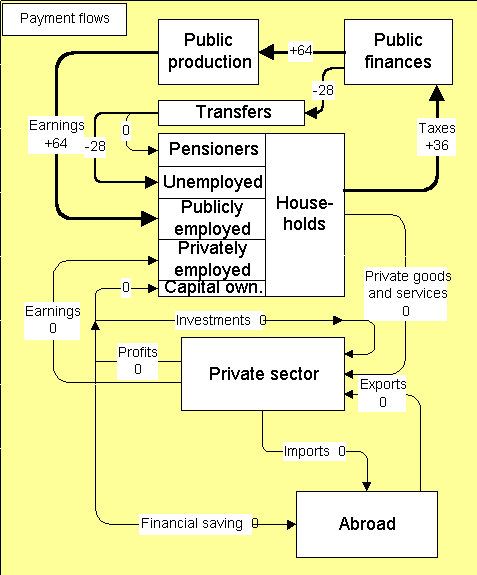
Figure 8.3:1. Changes of payment flows when taxes
increase by 1 %-unit.
Only the payment flows that go via the public sector are
changed when the taxes change. One loop with 36 Mdr/year is added
and at the same time 28 Mdr/year are redistributed form transfers
to public production. The total earnings of the publicly employed
increases by 36+28 = 64 Mdr/year. The total earnings of the
privately employed remains unchanged. The workforce is
redistributed according to the diagram below:
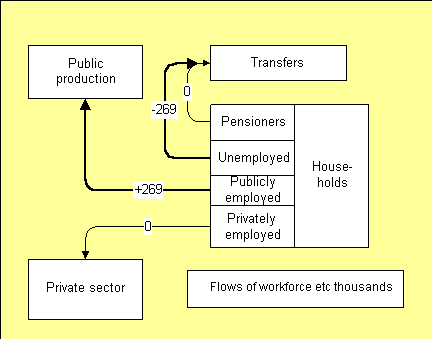
Figure 8.3:2. Changes of workflows when taxes increase by 1 %-unit.
269 thousand people get a job in the public production. The number of unemployed decreases to the same extent. The number of employees in the private sector does not change. The reason is that the private consumption is a parameter of the model that has been kept constant. This somewhat astonishing result, thus came from the design of the model. The model shows what happens when the rest of the parameters are held constant. But it also shows that it is a possible state of the economy. The route to that state is a question of economic policy.
It can be doubt about the fact that the private consumption should remain constant after increasing the taxes. Tax increases are often referred to as a tightening of the economy with the intention to lower the consumption. In order to understand what has happened in our calculation, it is necessary to examine changes that not are shown directly by the model or the diagrams above.
The tax increase has diminished the net income of all people that already have a job. These people become a lower consumption. The unemployed that have become a job have increased their consumption to an equal amount. These unemployed now work in the public sector. In stead of being paid for doing nothing, they now get (more) paid to produce in the public sector. The tax money do not disappear, they come back (after tax deduction) as a demand on private goods and services.
The final result is a redistribution of income, improved public service from which all benefit through better daycare for children, better schools, more resources to the hospitals, more cultural activities, improved public transportation and so on. It is a big improvement for the society as a whole, the GDP has increased. The increased costs for the public sector are regained in the form of increased public production. This is analogous with what is need in order to increase the private production, increased costs for the private consumption correspond to increased labor for producing the goods that we want to buy.
The main difference is how we distribute our income between individuals and over time. There will be no average economic difference if you get public health care free of charge when you need it or if you buy it for own money from the private sector (if the health care is run privately) and if you can afford the service. The big difference is that also those who cannot afford the private health care, can benefit from the health service. Each individual may need expensive health care during a short period of his/hers life. This occasion does not disrupt the persons whole economy, if financed by public means. Some persons may not need health care at all, but have by means of the taxes the opportunity to get it when needed.
Klas Eklund has a diagram Public services, transfers and
taxes during the life time of an individual in his book (3)
(Figure 9.1). Here he shows, based on data from SCB, how
an individual benefits from the public services, mainly during
childhood and old age, and mainly pay taxes during the time as a
working professional during the middle of the lifetime. The taxes
not only contribute to a redistribution, the taxes also give an
increased public production that would never occur otherwise.
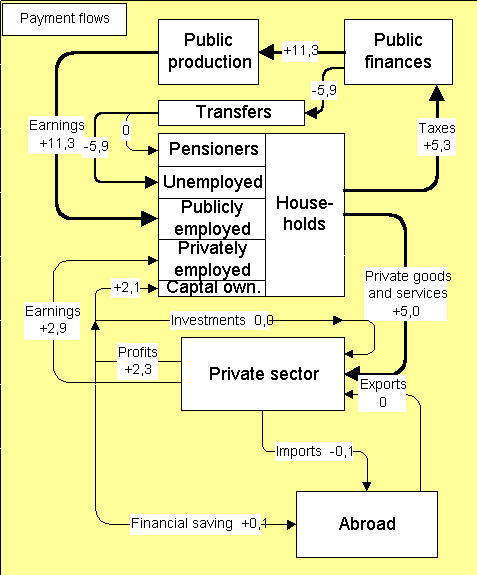
Figure 8.4:1. Changes of payment flows when the
production in the private sector increases, corresponding to an
increase of consumption = 5,0 Mdr/year.
A growth of the private production gives growth in the whole society. The unemployment decreases, the tax payment increase and more people can be employed in both the private and public sectors. The dividends from the companies also increase. All people ought to be content. But there still remains one question. We have had economic growth since the year 1950 (and before also, but less) and nevertheless, the unemployment is bigger now than before. The share of poor and marginalized people in the society increases. At the same time, natural resources are consumed at an ever increasing pace. How long can this continue? Coming models will include the use of natural resources.
There has to be some more basic property of the economy that
determines our standard of living. As previously shown, table 8:1
above, there are more factors except economic growth that
influence welfare and unemployment. I will show later that all
these solutions (probably) imply a more even distribution of
incomes in the society.
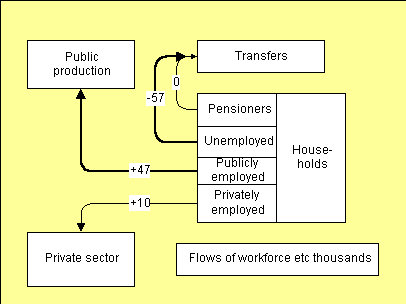
Figure 8.4:2. Changes of workforce flows when the production in the private sector increases by 5,0 Mdr/year.
Model S3, that was described above, does not consider the real volume of the production. This suggests that it shows basic relations that are independent of the real size of the economy.
The Excel calculus that describes Model S3 can be downloaded here.
Back to home page or contents. Next chapter Chap 9 .